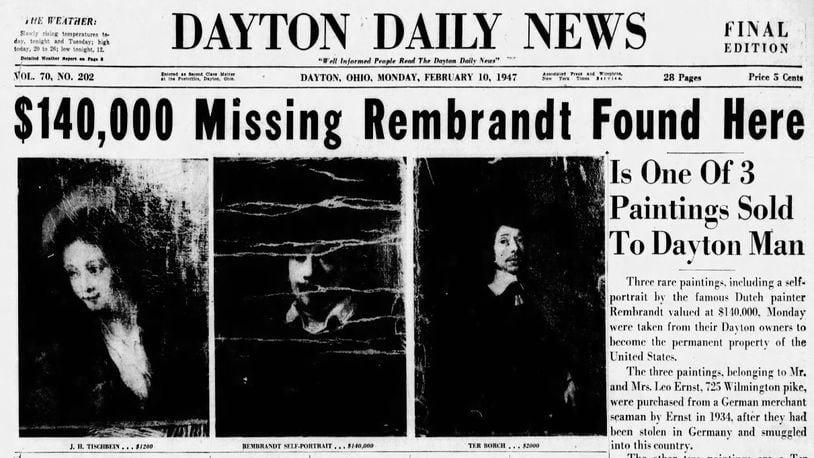Leo Ernst, a Dayton plumber, said he bought the painting and two other much less valuable paintings in 1934 and believed they were fakes. His wife, while cleaning the house, found the paintings years later.
“They’re nothing, just some old junk,” Leo Ernst reportedly told his wife.
In July 1946, they turned the paintings over to the Dayton Art Institute, where the director said officials were ”practically astounded.”
The Dayton museum history you didn’t know: When there was a zoo at the Art Institute
A report in the Cincinnati Enquirer called the discovery “one of the most important (art) finds ever made in this country,”
The Metropolitan Museum of Art in New York confirmed the Rembrandt was genuine.
The Dayton Daily News, which wrote that “the nation’s art circles buzzed over news” about the Rembrandt, followed up the next day with Ernst. In an interview, he said he bought the paintings on a visit to New York years before, where he met a German merchant. He declined to say how much he paid for the paintings.
Research showed that the paintings had been stolen from the Weimar museum in Thuringia, Germany in 1922. German soldiers reportedly climbed lightning rods of the museum to steal multiple paintings.
The Dayton Daily News marked the anniversary of the global event 20 years later with a story on Feb. 24, 1967. It included anecdotes from Dayton Art Institute employees about its possession of the paintings from summer 1946 until they were taken from federal officials on Feb. 10, 1947.
“We’d been told not to say anything,” said Kathryn Pinkney, who was publicity director at the museum at the time. “When a reporter called, I kept telling her I didn’t know what she was talking about.”
The Dayton Art Institute was allowed to display the paintings before they were taken out of town by the FBI, and nearly 21,000 people were allowed into the vault to view them hanging behind heavy wire grating.
About the Author
